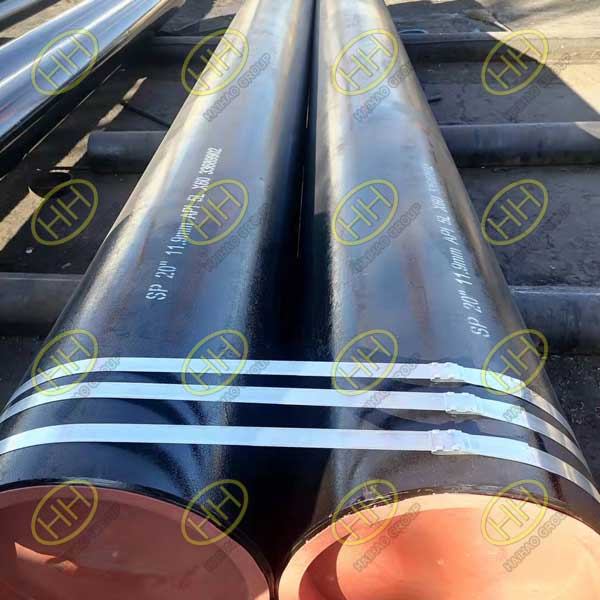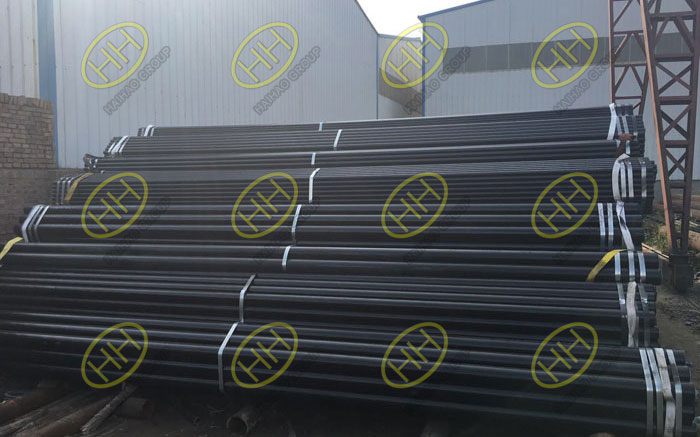Advanced surface quenching techniques for thick-wall steel pipes
Haihao Group, a leading manufacturer specializing in pipe products, introduces cutting-edge surface quenching methods for thick-wall steel pipes. These advanced techniques ensure superior hardness and durability, meeting the stringent demands of various industries.
1.Induction Quenching: precision and efficiency
Induction quenching, a state-of-the-art process, involves passing a specific frequency of alternating current (ranging from high, medium to low frequencies) through an induction coil. This generates an alternating magnetic field around the coil, inducing eddy currents in the workpiece. This phenomenon, known as eddy current heating, concentrates mainly on the surface layer due to the skin effect.
The rapid resistance heating of the workpiece’s surface to the quenching temperature is followed by immediate water spray, resulting in a hardened surface layer. The thickness of the hardened layer decreases with an increase in frequency. The principle of induction quenching lies in the electromagnetic induction that produces eddy current heating on the workpiece’s surface, followed by rapid cooling, thereby achieving enhanced surface quenching technology.
The practical application of induction quenching involves frequencies ranging from 50Hz to 500KHz. The frequency ranges include medium frequency (50Hz–10KHz), ultrasonic frequency (10KHz–50KHz), and high frequency (50KHz and above). These cater to various applications, ensuring precise and efficient surface quenching for a range of workpieces.
2.Flame Quenching: simple, cost-effective, and versatile
Flame quenching is a technique where a specific region of the workpiece’s surface is heated using a flame to transform it into austenite, followed by quenching. The heat supplied to the surface by the flame must exceed the heat dissipated to the surroundings for successful surface quenching.
Various gases, such as oxygen-acetylene, coal gas-oxygen, natural gas-oxygen, and propane-oxygen, are used to generate flames of different temperatures. Oxygen-acetylene flames can reach temperatures up to 3100°C, making it the hottest, while propane-oxygen flames have a lower temperature of 2650°C.
Advantages of flame quenching include simplicity, ease of operation, cost-effectiveness, adaptability to workpiece sizes, minimal deformation, and absence of oxidation and decarburization after quenching. However, potential challenges include overheating, restrictions based on surface shapes, and the inherent risk of gas explosion during heating.
Incorporating these cutting-edge surface quenching techniques, Haihao Group ensures that its thick-wall steel pipes exhibit superior mechanical properties and meet the diverse needs of industries such as petroleum, chemical, power generation, and more. Elevate your projects with our advanced pipe solutions.


